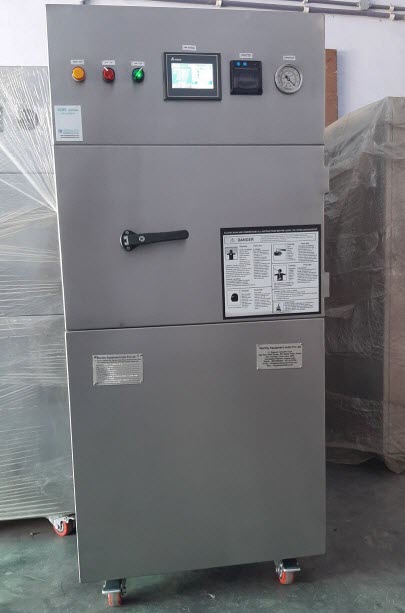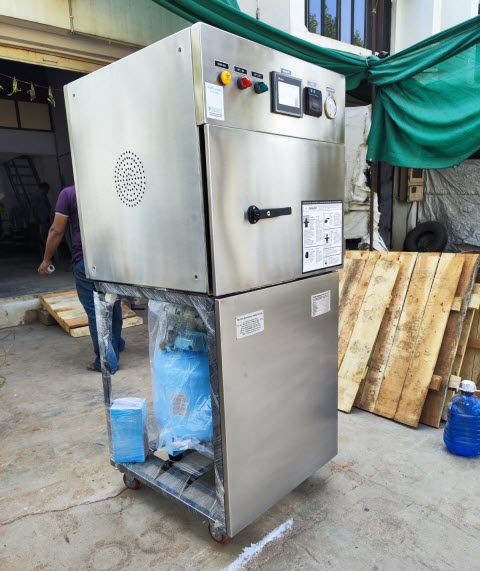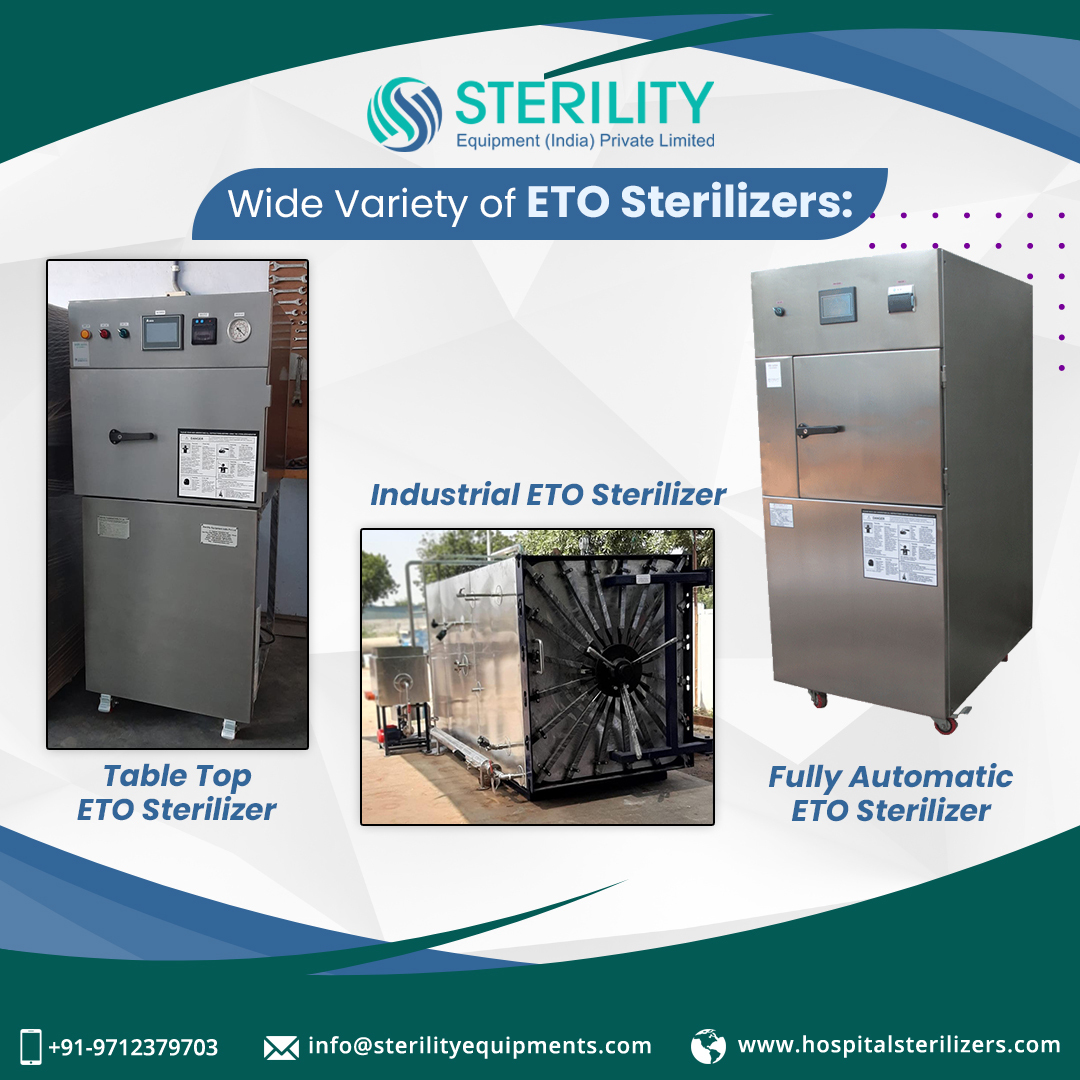Sterilizer equipment technology has undergone significant advancements in recent years, revolutionizing the way we ensure cleanliness and safety in various industries. From traditional methods to cutting-edge technologies, we delve into the transformative changes that have shaped the sterilization landscape.
Sterilizer equipment has come a long way from its humble beginnings, constantly evolving to meet the ever-growing demands of industries such as healthcare, pharmaceuticals, food processing, and laboratories. With the primary goal of eliminating harmful microorganisms and ensuring product safety, sterilization processes have witnessed a remarkable shift towards more efficient, precise, and technologically advanced equipment.
Enhanced Efficiency and Speed
One of the key areas where sterilizer equipment technology has made remarkable progress is in enhancing the efficiency and speed of the sterilization process. With the advancement of technology, modern sterilizers have been equipped with cutting-edge features and innovative mechanisms that revolutionize the way sterilization is conducted.
These advanced sterilizers are designed to optimize every aspect of the sterilization process, from pre-processing to post-processing. They incorporate sophisticated algorithms and automated functions that streamline operations, reducing downtime and increasing productivity. By leveraging optimized workflows, these sterilizers offer swift and effective sterilization, catering to the demands of time-sensitive industries.
The enhanced efficiency and speed of modern sterilizer equipment are attributed to several factors. Firstly, the incorporation of intelligent control systems enables precise control and monitoring of essential parameters such as temperature, pressure, and exposure time. This ensures that the sterilization process is conducted efficiently, achieving the desired level of cleanliness while minimizing unnecessary delays.
Additionally, advancements in heating technology have significantly contributed to faster sterilization cycles. Sterilizers now utilize rapid heat-up and cool-down mechanisms, allowing for quicker turnaround times between batches. These technologies have reduced the overall processing time without compromising the effectiveness of sterilization.
Moreover, the introduction of innovative loading and unloading systems has improved operational efficiency. Sterilizers are now designed with ergonomic features and automated handling mechanisms, minimizing manual intervention and optimizing the workflow. This eliminates potential bottlenecks and reduces the risk of errors, further enhancing efficiency and speed.

Intelligent Control Systems for Precise Sterilization
In the field of sterilizer equipment technology, intelligent control systems have revolutionized the way sterilization processes are conducted. These advanced systems leverage sophisticated algorithms and sensors to monitor and regulate crucial parameters, such as temperature, pressure, and exposure time, ensuring precise and consistent sterilization.
Intelligent control systems play a vital role in maintaining optimal conditions throughout the sterilization cycle. They constantly monitor the parameters and make real-time adjustments to ensure that the sterilization process is carried out with accuracy and effectiveness. By eliminating the risks associated with human error and variability, these systems provide a higher level of confidence in sterilization outcomes.
One of the key advantages of intelligent control systems is their ability to adapt to different sterilization requirements. These systems can accommodate varying load sizes, materials, and sterilization methods, allowing for flexibility in different applications. Whether it’s sterilizing medical instruments, laboratory equipment, or food packaging, the intelligent control systems ensure that the sterilization process is tailored to meet specific needs while maintaining precise and consistent results.
The integration of sophisticated sensors is a crucial component of intelligent control systems. These sensors continuously monitor the sterilization environment, providing accurate and real-time data to the control system. This data allows for precise adjustments and ensures that the sterilization parameters are maintained within the required range.
Furthermore, the algorithms embedded within intelligent control systems analyze the collected data and make informed decisions to optimize the sterilization process. These algorithms consider factors such as load composition, cycle duration, and the desired level of sterilization, enabling precise adjustments to achieve the desired outcome.
By leveraging intelligent control systems, sterilizer equipment technology has significantly improved the reliability and precision of the sterilization process. The elimination of human error and the ability to adapt to different requirements ensure consistent and accurate sterilization, enhancing safety and quality assurance in various industries.

Advanced Sensor Technology for Enhanced Safety
In sterilization procedures, safety is of utmost importance, and advanced sensor technology has significantly contributed to enhancing safety measures. Sterilizer equipment now incorporates state-of-the-art sensors that play a pivotal role in detecting potential hazards and ensuring a secure environment for both operators and the items being sterilized.
The integration of advanced sensor technology enables sterilizer equipment to monitor critical factors in real-time. These sensors are designed to detect and respond to various safety risks that may arise during the sterilization process. For example, they can detect leaks, pressure fluctuations, or abnormal temperature levels that may compromise the effectiveness of sterilization or pose a threat to the equipment or personnel.
By providing real-time feedback, these advanced sensors enable swift and proactive actions to mitigate potential safety hazards. When a sensor detects an anomaly, it triggers the appropriate response, such as alerting the operator or initiating automated safety protocols. This immediate response helps prevent accidents, reduce downtime, and ensure the safety of both the operators and the sterilized items.
The utilization of advanced sensor technology in sterilizer equipment also enhances process validation and regulatory compliance. The data collected by the sensors can be logged and used for documentation, quality control, and audits. This ensures traceability and accountability, allowing operators to demonstrate adherence to safety standards and regulations.
Moreover, advanced sensors can contribute to predictive maintenance, further enhancing safety. By continuously monitoring equipment performance and detecting any signs of wear, deterioration, or malfunction, these sensors can alert operators to potential maintenance needs before a critical failure occurs. This proactive approach minimizes the risk of unexpected equipment failures during sterilization processes, enhancing overall operational safety.
Energy Efficiency and Sustainability
In today’s era focused on sustainability, sterilizer equipment technology has embraced energy-efficient solutions. Manufacturers are actively developing sterilizers that optimize energy consumption while maintaining the highest standards of cleanliness and safety. These advancements not only contribute to a greener future but also offer economic benefits to businesses.
The drive for energy efficiency in sterilizer equipment has led to the integration of various innovative technologies. Manufacturers are incorporating energy-efficient components and systems, such as advanced heat exchangers, efficient steam generators, and optimized heating elements. These components reduce energy waste by minimizing heat loss and improving energy transfer, ultimately resulting in reduced energy consumption during the sterilization process.
Improved insulation materials have also played a crucial role in enhancing energy efficiency. By utilizing high-quality insulation materials, sterilizers can retain heat more effectively, reducing the need for continuous energy input to maintain optimal temperatures. Enhanced insulation not only conserves energy but also improves overall process efficiency and reduces operational costs.
Smart power management systems have emerged as another key advancement in energy-efficient sterilizer equipment. These systems utilize intelligent algorithms and automation to optimize power usage throughout the sterilization process. By analyzing real-time data and adjusting power settings accordingly, these systems minimize energy waste during idle periods, standby modes, or low-demand situations. Smart power management ensures that energy is allocated efficiently, aligning with sustainability goals and reducing the carbon footprint.
The shift towards energy efficiency in sterilizer equipment not only promotes sustainability but also offers economic benefits to businesses. By reducing energy consumption, organizations can lower their operating costs, leading to significant long-term savings. Moreover, energy-efficient sterilizers may be eligible for incentives or certifications related to sustainability, enhancing the reputation of the business and demonstrating its commitment to environmental responsibility.
Customization and Flexibility for Diverse Applications
Modern sterilizer equipment has evolved to offer unprecedented customization and flexibility, allowing it to cater to diverse applications across industries. With modular designs and configurable settings, these sterilizers can accommodate various load sizes, types, and specific sterilization requirements, ensuring optimal results and adaptability to different operational needs.
One of the key advantages of modern sterilizer equipment is its modular design. Sterilizers are designed with interchangeable components and modules, allowing for easy customization based on specific application requirements. This modularity enables operators to configure the sterilizer to accommodate different load sizes, whether it’s small batches of medical instruments or large volumes of laboratory equipment. The flexibility in load capacity ensures efficient use of the sterilizer, maximizing its productivity.
Moreover, sterilizer equipment now incorporates configurable settings that can be tailored to specific sterilization requirements. Operators can adjust parameters such as temperature, pressure, exposure time, and sterilant concentration to meet the desired level of sterilization for different materials or items. This flexibility enables precise control and customization, ensuring optimal sterilization outcomes while maintaining the integrity of the sterilized items.
The versatility of modern sterilizer equipment extends beyond specific applications to various industries. Whether it’s healthcare, pharmaceuticals, laboratories, or even food processing, these sterilizers can be adapted to meet the unique requirements of each industry. For example, in the healthcare sector, sterilizer equipment can be configured to comply with medical device sterilization standards, ensuring the highest level of safety and cleanliness. In food processing, sterilizer equipment can be customized to meet stringent hygiene and packaging requirements, safeguarding the integrity of the food products.
The customization and flexibility of modern sterilizer equipment offers several benefits. Firstly, it optimizes efficiency by accommodating different load sizes and specific sterilization needs, minimizing wasted space and resources. Secondly, it ensures that items are sterilized effectively and safely, meeting the standards and regulations of each industry. Additionally, the ability to customize the sterilization process allows for faster turnaround times and increased productivity.






